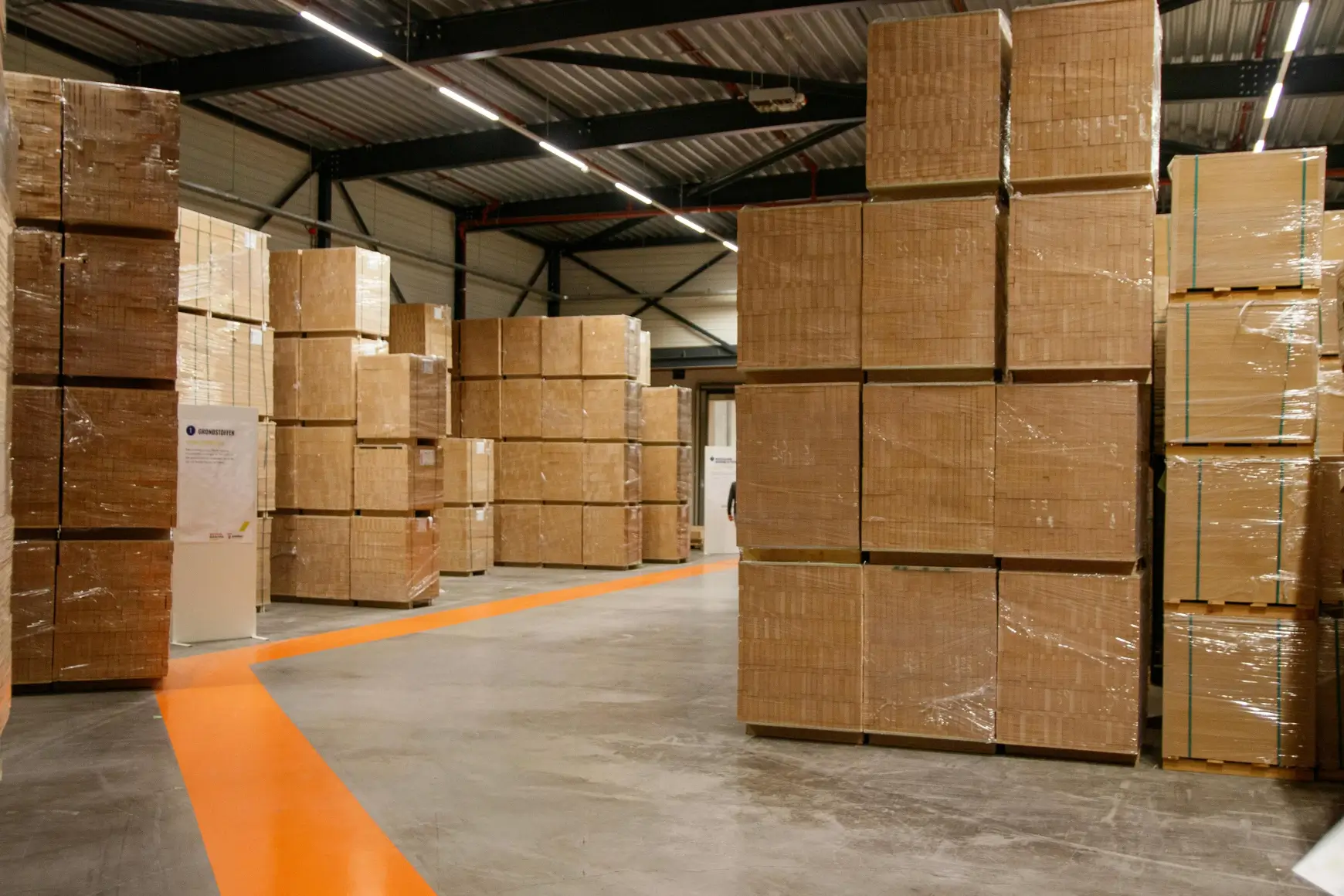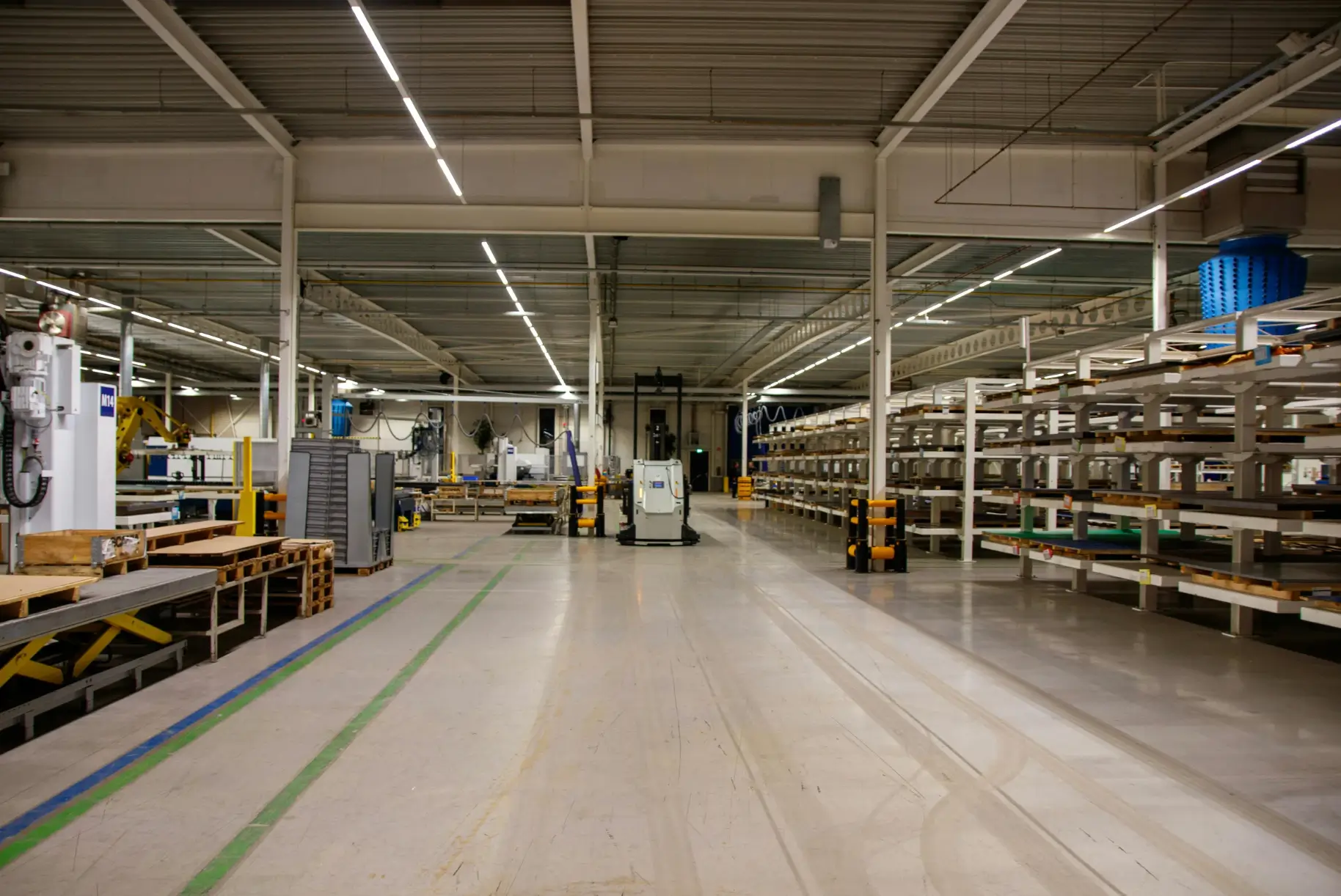In this guide, we’ll explore what lean warehousing is, its key principles, how to implement it, and how technology supports its success. You’ll also discover the benefits, challenges, and future trends shaping lean warehouse management.
What is Lean Warehousing?
Lean warehousing is an operational approach focused on eliminating waste, improving efficiency, and enhancing accuracy in warehouse operations. Originating from lean manufacturing principles, it aims to optimize every step of warehouse workflows - from inventory management to order fulfillment - by removing non-value-adding activities.
In a lean warehouse, resources are used intelligently. Every process, piece of equipment, and employee action contributes directly to customer value. The result? Lower costs, faster throughput, and higher customer satisfaction.
Key elements of lean warehousing include:
- Reducing inventory levels and excess handling
- Improving warehouse layout and storage systems
- Streamlining picking and packing workflows
- Standardizing and automating repetitive tasks
- Encouraging a culture of continuous improvement
Companies that embrace lean warehousing report significant gains in productivity and space utilization. For example, businesses like ShipBob have shown how applying lean principles can reduce costs while speeding up delivery times.
The 5S Principles of Lean Warehousing
At the core of lean warehouse management are the 5S principles, a simple yet powerful framework for organizing and maintaining efficient operations. These five steps (Sort, Set in Order, Shine, Standardize, Sustain) provide a clear roadmap for minimizing waste and improving productivity.
1. Sort (Seiri)
The first step in lean warehousing is identifying and removing unnecessary items. Warehouses often accumulate outdated tools, unused inventory, or redundant materials that clutter space and slow operations.
By sorting through what’s truly needed, you can:
- Eliminate obsolete or damaged stock
- Free up valuable space
- Improve safety and organization
Separating slow-moving or seasonal items also helps create a more efficient flow, ensuring only relevant materials are kept in high-access zones.
2. Set in Order (Seiton)
Once clutter is cleared, the next step is to organize the warehouse logically. This involves arranging inventory and equipment so they’re easy to find and access.
Effective strategies include:
- Using ABC analysis to categorize items by turnover rate
- Storing fast-moving goods near dispatch areas
- Placing slower-moving items in less accessible zones
The goal is to reduce movement and time spent searching, improving productivity while minimizing risk of handling errors.
3. Shine (Seiso)
A clean warehouse is an efficient warehouse. The Shine principle focuses on cleanliness, order, and preventive maintenance.
Assign cleaning responsibilities on a team basis and schedule regular inspections to maintain high standards. A well-maintained environment ensures:
- Safer operations
- Fewer equipment breakdowns
- Higher employee morale and accountability
This step reinforces that cleanliness is not a one-time event, it’s an ongoing process that supports efficiency.
4. Standardize (Seiketsu)
Standardization is the backbone of consistency. It ensures that everyone follows the same procedures for labeling, storage, picking, and safety.
Lean warehouses achieve this through:
- Clear visual management tools (labels, signage, color coding)
- Documented standard operating procedures (SOPs)
- Regular employee training and refreshers
When tasks are standardized, errors decrease, and productivity rises, creating a stable foundation for continuous improvement.
5. Sustain (Shitsuke)
Sustainability in lean warehousing means making lean a habit, not a one-off project. It requires leadership commitment, ongoing monitoring, and employee engagement.
Regular audits, performance reviews, and open communication channels help sustain lean practices. Over time, this fosters a culture of ownership and accountability, ensuring that improvements stick.
How to Implement Lean Warehouse Management
Transitioning to a lean warehouse involves more than a few procedural tweaks, it’s a mindset shift. Here’s how to make the change effectively:
1. Audit Current Processes
Start by assessing your warehouse operations. Identify bottlenecks, redundant processes, and areas of waste. Common inefficiencies include excessive movement, overstocking, or underutilized equipment.
Regular audits provide a data-backed foundation for targeted improvements and long-term sustainability.
2. Apply Just-in-Time (JIT) Inventory Management
Just-in-Time (JIT) is a cornerstone of lean warehousing. It minimizes storage costs by ordering materials only when needed. This reduces excess stock, improves cash flow, and enhances responsiveness to demand changes.
Integrating JIT with real-time tracking systems, such as IoT-based sensors or Warehouse Management Systems (WMS), ensures precise inventory control and minimizes human error.
3. Train and Engage Employees
Employees are the heart of a lean warehouse. Invest in training programs that teach lean principles, problem-solving, and continuous improvement.
Key strategies include:
- Hands-on workshops to reinforce lean methods
- Visual management systems to communicate KPIs
- Cross-training employees for operational flexibility
When teams understand why lean matters, they’re more motivated to uphold it.
4. Use Visual Management Tools
Visual cues such as performance dashboards, color-coded zones, and signage make it easier to track progress and identify inefficiencies. These tools keep everyone aligned with daily, weekly, and monthly goals, reinforcing the lean mindset throughout the warehouse.
Leveraging Technology in Lean Warehousing
Technology is a key enabler of lean warehouse operations. Modern tools automate repetitive tasks, improve accuracy, and provide real-time visibility into performance.
Warehouse Management Systems (WMS)
A Warehouse Management System acts as the central nervous system of lean warehousing. It tracks inventory, optimizes routes, and ensures accurate order fulfillment.
WMS platforms like Modula WMS or Extensiv Warehouse Manager help businesses:
- Reduce picking errors
- Improve inventory visibility
- Optimize space utilization
- Automate reporting and analytics
By eliminating manual tracking, WMS solutions enhance decision-making and support lean efficiency.
Automation and Robotics
Automated systems, such as AS/RS (Automated Storage and Retrieval Systems) or robot-assisted picking, dramatically improve productivity. They reduce travel time, minimize labor costs, and improve order accuracy.
Examples of automation in lean warehousing include:
- Robotic palletizers for repetitive tasks
- Conveyor-based transport for consistent material flow
- Barcode and RFID scanners for error-free tracking
Automation not only supports lean goals but also scales with growing demand.

IoT and Data Analytics
The Internet of Things (IoT) and data analytics provide actionable insights that help warehouses stay lean. IoT sensors monitor temperature, humidity, and inventory levels, while analytics tools identify inefficiencies and predict maintenance needs.
Together, these technologies turn raw data into continuous improvement opportunities, the essence of lean warehousing.
Benefits of Lean Warehousing
Implementing lean warehousing principles offers measurable benefits across every aspect of operations.
1. Increased Efficiency
By streamlining workflows and reducing unnecessary steps, warehouses can handle more orders without adding labor or resources. Value stream mapping helps visualize waste and optimize each process for faster throughput.
2. Cost Reduction
Lean warehousing eliminates unnecessary storage, energy use, and transportation costs. Methods like JIT inventory and space optimization significantly reduce overhead while maintaining high service levels.
3. Improved Customer Satisfaction
Accurate, on-time deliveries are the result of efficient processes and well-organized operations. Lean warehousing improves picking accuracy and fulfillment speed, resulting in happier customers and higher retention rates.
4. Safer Work Environment
Clean, organized, and standardized workspaces reduce accidents and create a safer, more productive environment. Regular maintenance and visual controls further enhance safety and compliance.
Challenges of Lean Warehousing
While the benefits are substantial, implementing lean warehousing isn’t without challenges.
Initial Investment
Transitioning to lean operations often requires upfront spending on technology, employee training, and process redesign. However, these investments yield long-term returns in efficiency and cost savings.
Cultural Resistance
Change can be difficult, especially in warehouses with long-standing processes. Clear communication, leadership buy-in, and celebrating small wins are essential to overcoming resistance and building a lean culture.
Sustaining Improvements
Lean warehousing isn’t a one-time project, it’s a continuous journey. Regular reviews, feedback sessions, and leadership involvement are vital to keeping momentum and preventing backsliding into old habits.
Future Trends in Lean Warehousing
The future of lean warehouse management is driven by emerging technologies that push efficiency even further.
- AI and Machine Learning: Predict demand, optimize inventory, and automate decision-making.
- Robotics and Drones: Accelerate picking and inventory audits with minimal human input.
- Augmented Reality (AR): Support workers with visual guidance for faster, error-free picking.
- IoT Connectivity: Enable real-time monitoring and predictive maintenance across all warehouse assets.
These advancements enhance flexibility and responsiveness, making lean warehousing even more powerful in the years ahead.
Conclusion
Lean warehousing is more than an operational tactic, it’s a philosophy that transforms how warehouses create value. By embracing the 5S principles, leveraging technology, and fostering a culture of continuous improvement, companies can reduce costs, improve accuracy, and deliver superior customer experiences.
The path to a lean warehouse takes time and commitment, but the results are worth it: greater efficiency, lower waste, and a stronger competitive edge in an evolving logistics landscape.
Frequently Asked Questions
What is lean warehousing?
Lean warehousing is a strategy that improves efficiency by removing waste and non-value-adding activities from warehouse operations, leading to better productivity and lower costs.
What are the 5S principles in lean warehousing?
The 5S principles - Sort, Set in Order, Shine, Standardize, and Sustain - provide a framework for organization, cleanliness, and continuous improvement in warehouse environments.
What are the main benefits of lean warehouse management?
Lean warehouse management increases efficiency, reduces costs, enhances safety, and improves customer satisfaction through streamlined operations and reduced waste.
How does technology support lean warehousing?
Technology such as Warehouse Management Systems (WMS), automation, robotics, and IoT applications help optimize workflows, improve accuracy, and support continuous improvement efforts.



